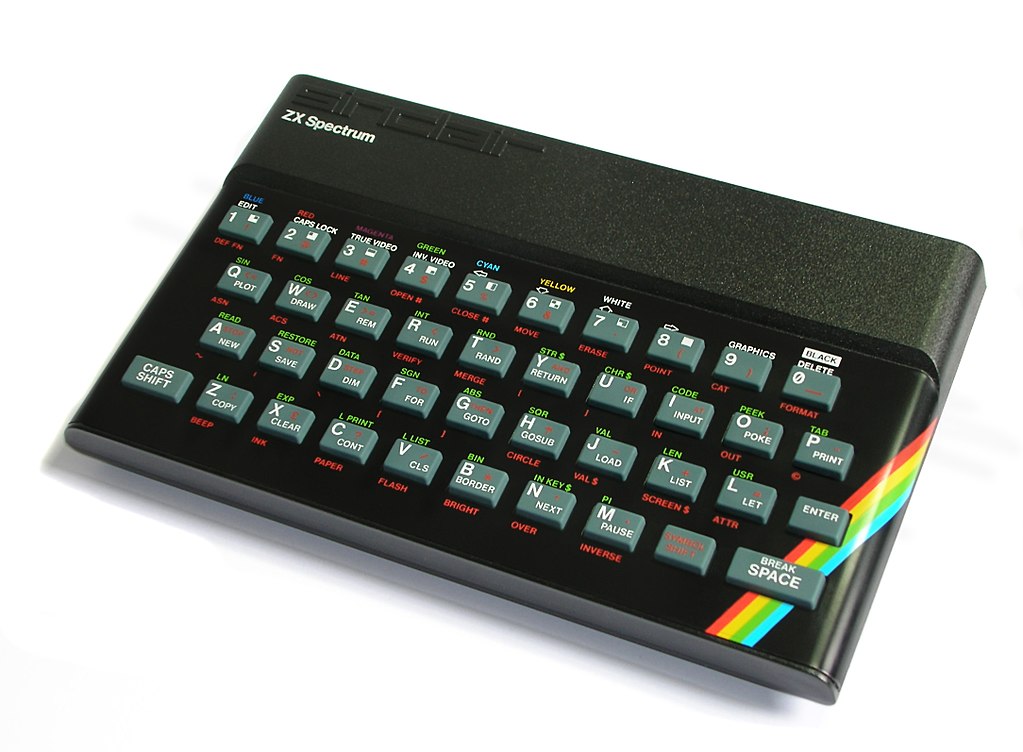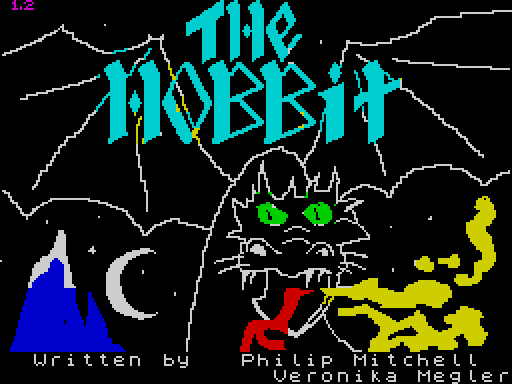Not Just A Pretty Face
Unlike its predecessor, the Sinclair ZX81, the ZX Spectrum was a significant step up in functionality and performance. Launched in 1982, the original versions boasted 16K ROM (read-only memory) and either 16K or 48K RAM (random access memory) at a launch price of £125 and £175 respectively. Sir Clive Sinclair believed the low price point was important against its rivals , specifically the BBC Micro.

The BBC Micro was launched as a tie-in with the BBC’s computer literacy project. Although Sinclair had bid for the BBC contract, it had gone to local Cambridge rivals Acorn Computers and Sinclair wanted to ensure his new computer beat its competitor.
Gone were the monochrome block graphics of the ZX80 and ZX81 – instead there were bitmap graphics in 15 shades (light and dark variants of 7 colours plus black) as well as sound output via a speaker built into the computer. The TV output was now supported by dedicated hardware meaning the Z80 CPU was fully available for program usage – effectively a four times performance increase.
Another noticable change was the keyboard. The membranes of the ZX80 and ZX81 were replaced with separate rubber keys, lovingly(!) referred to as having a “dead flesh” feeling. The ZX Spectrum still kept the approach of mapping BASIC language keywords to specific keys and, as with the ZX81, the additional commands associated with colour and sound resulted in a number of commands being mapped to the same keys accessed via different modifiers.
As with the ZX81 manual, the ZX Spectrum manual cover was a painting by science-fiction artist John Harris. He would also supply the cover for the Sinclair Microdrive peripheral.
The First Of A Long Line
Later variants of the ZX Spectrum such as the ZX Spectrum+ and ZX Spectrum 128 added improved keyboards, more memory and additional hardware interfaces such as the RS-232 serial port, RGB monitor output and MIDI (Musical Instrument Digital Interface) port. When Amstrad bought the rights to the Spectrum and Sinclair brands, further models were released imaginitively called (wait for it…) ZX Spectrum +2, ZX Spectrum +2A, ZX Spectrum +3, ZX Spectrum +2B and ZX Spectrum +3B. The series was officially discontinued in 1992 after having sold in excess of 5 million units.

The popularity of the computer hardware triggered a wave of new software developed for it. While some of the games left much to be desired, many classic original games were produced for the ZX Spectrum such as Jet Set Willy, The Hobbit, Ant Attack and R-Type. Many of these games’ authors went on to found development studios that are still producing games at the time of writing.